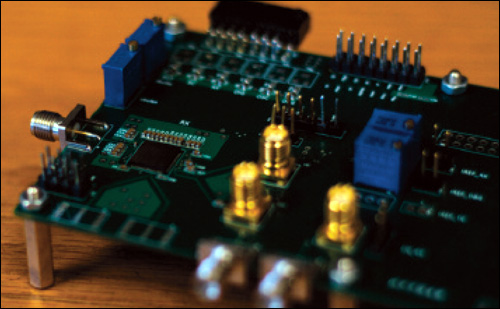As the population in many industrialized countries ages, researchers worldwide have been developing technologies that would enable doctors to monitor patients at home, remotely and in real time. One challenge has been to develop a device that could be worn for long periods. Researchers at the Someya-Sekitani Organic Transistor Lab, at the University of Tokyo, Johannes Kepler University, in Austria, and the University of Texas at Dallas have taken a step in that direction. Together, they’ve developed ultrathin, organic sensors that one day could wirelessly communicate a patient’s temperature, heart rate and other crucial data.
The researchers’ goal was to create lightweight sensors that were thin enough and flexible enough that a patient would not be aware he or she was wearing them. For a device to be worn for long periods, it would have to be soft, compliant and allow for the natural motion of surrounding tissue. They developed sensors that are five times thinner than plastic kitchen wrap and lighter than a feather.

Most state-of-the-art integrated circuits, or “chips,” are fabricated on rigid substrates, such as silicon or glass, that can’t conform to soft body tissue. Sensors are integrated with these ICs, and in addition to being too rigid to wear, they often require a lot of energy to power them.
The researchers created sensors using a carbon-based semiconductor and an electroplated aluminum oxide dielectric layer on an ultrathin polymer foil that is highly flexible. After fabrication, an ultrathin polymer film is deposited on top of the device, to protect it from fluids, air and other environmental factors. The second polymer layer also alters the bending mechanics of the device, effectively reducing the strain in the sensors so the device can bend or crumple to conform to the movements of human skin.
To minimize the amount of energy consumed, Jonathan Reeder, a University of Texas at Dallas researcher, developed a way to optimize the creation of the dielectric layer, which dictates the voltage at which each transistor activates. This approach opens new doors for applications in biomedical devices that require minimal voltage.
“By making sensors or stimulators that are essentially imperceptible to the body, we hope we can provide a fabrication technique for devices for treating disorders and diseases, and monitoring health in ways that have previously not been possible,” Reeder says. “This would be accomplished through the chronic monitoring of body
signals, such as blood pressure, body temperature, glucose levels and neural activity, and would provide diagnostic information that could be used for treatments. Treatments could potentially be delivered through a similar type of ultra-thin, ultra-flexible device, such as a neural stimulator.”
The prototype sensors require wiring, because the first stage of the research focused on creating high-performance electronics that can interface with delicate tissue. “As flexible biomedical device technology progresses, it will be necessary to create complete devices that bring together multiple technologies—sensors with wireless communication and power delivery—in a robust but flexible package,” Reeder says. “Other research groups have shown that it’s possible to wirelessly transfer bio-signals from the skin to a computer.”
The researchers have demonstrated temperature, tactile and pressure sensing. They plan to expand the sensing capabilities toward complex body signals, which could include the brain and heart, as well as monitoring pH and chemical levels. “These devices are exciting for applications in medicine for collecting body signals or applying stimulation to biological tissue, which is soft and dynamic,” Reeder says.

